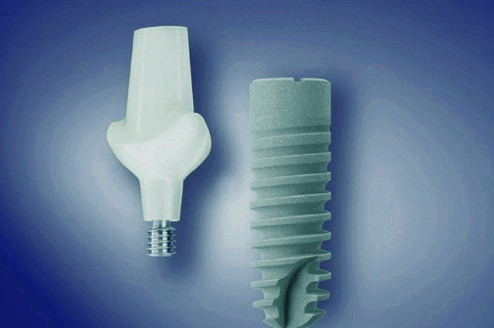
In order to guide applicant to compile the registration application dossier, CFDA released the Technical Review Guiding Principles of Registration for Dental Implant (System) on Mar 24th, 2011.
What the basic requirements for dental implant (system) in China?
According to the Technical Review Guiding Principles of Registration for Dental Implant (System), the basic requirements include:
- 1. Product Technical Report
- 2. Product Risk Management Report
- 3. Product Standard
- 4. Registration Inspection Report
- 5. Clinical trial
- 6. Product Instruction and Label
And, we would show you what are the contents involved with the part of Product Technical Report today.
The Product Technical Report shall include the following content:
- 1. Product Description
- 2. Material Performance
- 3. Product Performance
- 4. Compatibility of Implant and Implant Abutment
- 5. Corrosion Resistance Test
- 6. Surface modification
1. Product Description
Product description shall contain the discussion of performance indexes, intended use and competitive edge, as well as product characteristics. Product characteristic shall include shape, physical dimension and tolerance, vorticity resistance, and so on. Enclosing the design paper with mark.
2. Material Performance
This part shall introduce the selection basis for material, material source, quality control measurement, relevant standards requirements, and supply channel. As well as include the data about chemical property, physical property, mechanical property and biological property.
Chemical property: including chemical composition, relative impurity content and its upper limit, solubleness, degradability, as well as the test methods.
For composite material, shall consider hydroscopicity and its test methods
For metal material, shall consider corrosion resistance, electrochemical performance, as well as the test methods.
Physical property: including radiation impermeability, magnetism, Porosity parameter of surface coating, crystal properties.
Mechanical property:
For metal material, shall consider the 0.2% non-proportional ultimate tensile strength, elongation at break and elasticity modulus.
For ceramic material, shall consider the bending strength and its test method.
For composite material, shall consider the bending strength and elasticity modulus.
Chemical property: including chemical composition, relative impurity content and its upper limit, solubleness, degradability, as well as the test methods.
For composite material, shall consider hydroscopicity and its test methods
For metal material, shall consider corrosion resistance, electrochemical performance, as well as the test methods.
Physical property: including radiation impermeability, magnetism, Porosity parameter of surface coating, crystal properties.
Mechanical property:
For metal material, shall consider the 0.2% non-proportional ultimate tensile strength, elongation at break and elasticity modulus.
For ceramic material, shall consider the bending strength and its test method.
For composite material, shall consider the bending strength and elasticity modulus.
3. Product Performance
Some product performances cannot be fully reflected in material performance, such as fatigue resistance, compressive strength, shear strength, coat bonding strength. So we shall provide the test data for these product performances.
4. Compatibility of Implant and Implant Abutment
If you think your implant or implant abutment can be used with the different models of products marketed in China, you shall conduct the compatibility test to prove its compatibility. You shall submit the technical document about compatibility which includes size, shape and connection type.
5. Corrosion Resistance Test
If the implant made of metal material which is not used in dental implant before shall be conducted the corrosion resistance test.
Test condition: 37℃.
Test medium: physiological saline solution.
Evaluation index:
1. Corrosion potential of metal or alloy;
2. Coupling potential of dissimilar metal implant;
3. Corrosion rate of dissimilar metal implant.
Test condition: 37℃.
Test medium: physiological saline solution.
Evaluation index:
1. Corrosion potential of metal or alloy;
2. Coupling potential of dissimilar metal implant;
3. Corrosion rate of dissimilar metal implant.
6. Surface modification
The surface morphology of implant can make a great influence on bonding strength between implant and bone tissue. So if you make a surface modification for implant, you shall provide the research data about modification method, morphology feature, effectiveness and safety. The modification methods mainly include surface coating, sand blasting, acid etching, and other methods.
1. Surface Coating
1. Surface Coating
1.1 Ceramic coating
You shall provide the following information:
- Preparation technology, postprocessing, as well as feature;
- Coating Mean pore size, porosity and pore parameter, as well as test methods and adoption standard;
- 100×scanning electron micrograph of surface coating;
- Coating thickness and tolerance, as well as test methods and adoption standard;
- Coating chemical properties analysis, crystalline phase percentage;
- Coating morphological characteristics;
- Coating X-ray diffraction spectrogram;
- Coating abrasion, desquamation and desquamation, as well as test methods;
- Coating bonding strength, as well as test methods and adoption standard.
1.2 Metal coating
You shall provide the following information:
- Coating material and coating itself chemical properties analysis;
- Coating thickness and porosity;
- Coating surface morphological characteristics and chemical performance characteristic;
- Crystal phase and amorphous phase ratio and distribution;
- 100×scanning electron micrograph of surface coating;
- Coating abrasion, desquamation and desquamation, as well as test methods.
2. Sand Blasting
You shall provide the following information:
- Implant surface characteristic;
- Sand particle chemical component;
- Surface treatment method;
- Sand particle residual;
- Physicochemical property and craft process of the substance which can remove the sand particle;
- Implant surface analysis and micrograph.
3. Acid Etching
You shall provide the following information:
- Acid-etching primer chemical component, craft process;
- Coating surface morphological characteristics, surface chemical component and analysis after acid etching;
- Scanning electron micrograph;
Shall control the residual of Acid-etching primer.
4. Other
You shall provide the relevant document to ensure the treatment is safety.

